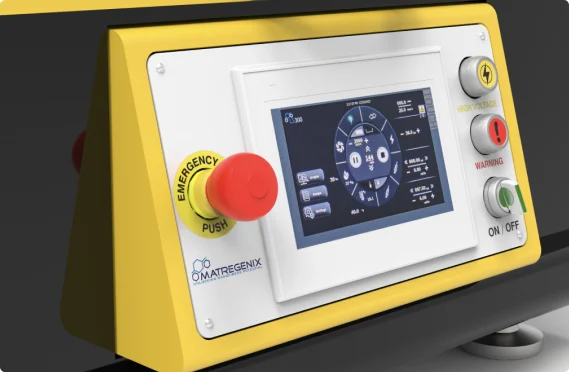Advancements in Nanofiber Electrospinning Technology
Nanofiber electrospinning technology has made significant strides over the years, revolutionizing industries like healthcare, filtration, textiles, and energy. This technique, which involves creating fibers at the nanometer scale, is notable for its ability to produce materials with extraordinary properties. Nanofibers boast a high surface area-to-volume ratio, flexibility, and mechanical strength, making them ideal for applications where precision, durability, and efficiency are crucial. As the demand for nanotechnology grows, advancements in nanofiber electrospinning are paving the way for innovations that are reshaping modern science and industry.
What is Nanofiber Electrospinning?
Electrospinning is a versatile and cost-effective technique that produces nanofibers by using electrical forces to draw charged threads of polymer solutions or melts. It operates by applying a high voltage to a liquid polymer, creating a jet that elongates and solidifies into ultrafine fibers, typically measuring between 50 and 500 nanometers in diameter. These fibers can be collected on a grounded surface, forming nonwoven mats that are thin, porous, and lightweight.
The simplicity of the electrospinning setup, combined with its ability to spin a wide variety of materials, has positioned it as a leading method for nanofiber production. Moreover, electrospun nanofibers can be engineered to possess specific properties such as enhanced mechanical strength, chemical functionality, or biological compatibility, making them invaluable in a variety of fields.
Key Advancements in Nanofiber Electrospinning
Recent developments in electrospinning technology have focused on overcoming challenges associated with scalability, precision, and functionality. These advancements are leading to better control over the electrospinning process, allowing for the creation of nanofibers with enhanced characteristics and expanded applications.
1. Enhanced Precision and Control
One of the most important advancements in electrospinning is the increased control over fiber morphology and diameter. Researchers are now able to fine-tune various parameters—such as polymer concentration, solvent selection, voltage, and temperature—to precisely manipulate fiber size and uniformity. This level of control has been instrumental in creating application-specific nanofibers for industries such as biomedical engineering, where consistency and precision are crucial for implantable devices, drug delivery systems, and tissue scaffolds.
In addition to basic electrospinning, innovations such as coaxial and tri-axial electrospinning have enabled the production of complex nanofiber structures. These methods allow for the creation of core-shell or multi-layered fibers with diverse functionalities in a single fiber, opening up new possibilities in drug delivery, wound healing, and filtration.
2. Scalability and Mass Production
One of the limitations of traditional electrospinning has been its inability to scale up for mass production, as the process has typically been slow and limited to small yields. However, new multi-needle and needleless electrospinning systems have addressed this challenge, allowing for high-throughput production of nanofibers on an industrial scale. Needleless electrospinning, for example, uses rotating cylindrical or disc-shaped electrodes instead of needles to generate multiple jets simultaneously, significantly boosting the production rate.
These advancements in scalability are particularly beneficial for industries such as filtration and textiles, where the demand for nanofibers is growing rapidly. High-throughput electrospinning systems ensure that manufacturers can meet this demand without sacrificing quality or performance.
3. Advanced Material Integration
The integration of functional materials into electrospun nanofibers has also seen significant progress. Researchers have been experimenting with a wide range of polymers, nanoparticles, and bioactive molecules to enhance the properties of nanofibers. For instance, the incorporation of metal nanoparticles can improve the electrical conductivity of nanofibers, making them suitable for applications in electronics and sensors. Similarly, embedding drugs or growth factors within electrospun nanofibers has led to advances in drug delivery and tissue engineering, allowing for controlled release and localized treatment.
The ability to combine different materials within a single nanofiber has also led to innovations in smart textiles and wearable technologies. For example, nanofibers can now be engineered to respond to environmental stimuli such as temperature, moisture, or pH, making them ideal for developing responsive and adaptive materials for healthcare and military applications.
4. Sustainability and Eco-Friendly Materials
With increasing awareness of environmental sustainability, there has been a growing interest in developing eco-friendly nanofiber materials. Researchers are exploring the use of biodegradable and bio-based polymers in electrospinning to create sustainable nanofiber products. This is particularly important in industries like packaging, agriculture, and medicine, where the use of non-toxic, biodegradable materials can significantly reduce environmental impact.
Electrospinning of natural polymers like cellulose, silk fibroin, and chitosan has gained attention for producing biodegradable nanofibers that can be used in environmentally friendly filtration systems, wound dressings, and drug delivery vehicles. Moreover, advancements in green electrospinning technologies, such as the use of water-based solvents, are further reducing the environmental footprint of the nanofiber production process.
Future Prospects of Nanofiber Electrospinning
As nanofiber electrospinning technology continues to evolve, it is expected to drive further innovations across multiple sectors. The development of smart electrospinning systems that incorporate artificial intelligence (AI) and machine learning (ML) algorithms is one such area of interest. These systems will allow for real-time monitoring and optimization of the electrospinning process, ensuring higher precision and reproducibility in nanofiber production.
Moreover, the ongoing exploration of novel materials and composites will likely lead to the creation of even more advanced nanofibers with enhanced properties. This will expand the range of potential applications, from energy storage and conversion to environmental remediation and healthcare.
Conclusion
The advancements in nanofiber electrospinning technology are unlocking new possibilities for industries and research fields worldwide. With enhanced precision, improved scalability, and the integration of functional materials, nanofiber electrospinning is pushing the boundaries of what is possible in nanotechnology. As this technology continues to develop, its impact on healthcare, energy, filtration, and other industries is set to grow, promising a future where nanofibers play an even more significant role in shaping the world around us.






